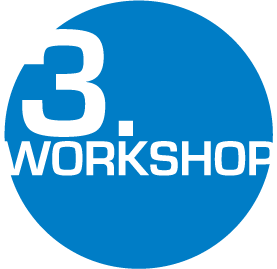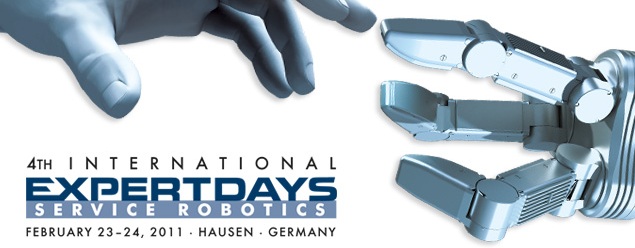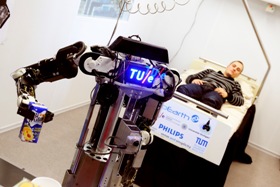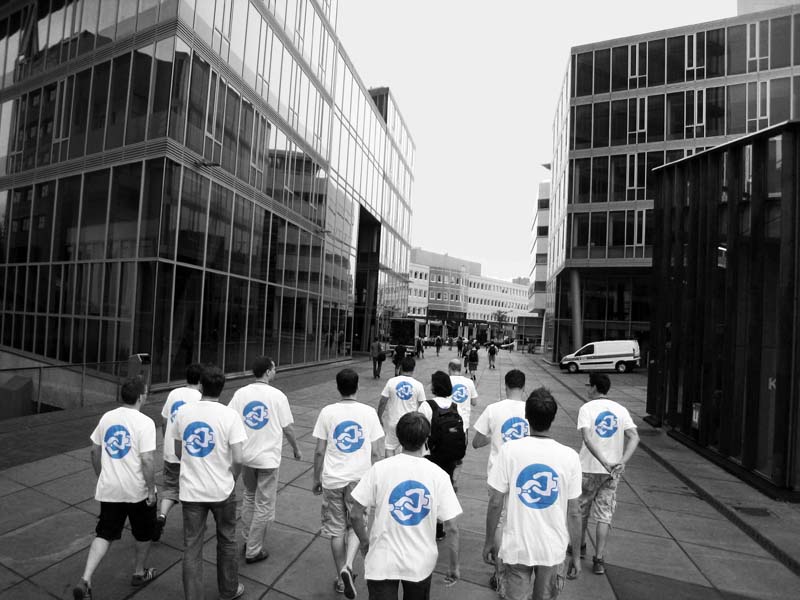Just a few days left for the RoboEarth Open Source Software Release

The code for the ICRA 2011 demo and other core components of RoboEarth will be released in July 2011. To receive an automatic update sign up for the newsletter!

The code for the ICRA 2011 demo and other core components of RoboEarth will be released in July 2011. To receive an automatic update sign up for the newsletter!

The third full week workshop, in which all partners of the RoboEarth project will get together for the next step in the integration of RoboEarth, will take place mid 2011.

At the European Robotics Forum (Västerås, Sweden, April 6-8, 2011), formerly known as the EURON/EUROP Annual Meeting, the RoboEarth team organized a workshop together with the BRICS and the Rosetta projects, entitled Knowledge engineering in robotics. In this workshop, we informed and discussed with the participants on various aspects of knowledge representation
Topics included:
On March, 16th, RoboEarth presented itself at the 30th Benelux Meeting on Systems and Control in Lommel, Belgium.

The 4th International Expert Days Service Robotics took place in Hausen, Germany, on February 23-24, 2011. The world-wide leading symposium for applied service robotics had over 116 experts and 18 speakers from 22 nations. Among them was Markus Waibel from the RoboEarth project, who presented the RoboEarth concepts to other participants.
An international committee has been formed to have a direct link to the industrial world. This committee consists of representatives of leading industries world wide. On February 7-8, 2011, a dedicated workshop has been organized at the ETH in Zurich, with the following objectives:
The second RoboEarth workshop took place from January 24th to 28th in Eindhoven, The Netherlands. The goal, which was successfully achieved, was to use the AMIGO robot, that was built at the Technical University of Eindhoven, to serve a drink to a patient in a hospital room environment. Therefore the robot should benefit from knowledge shared through RoboEarth.
The robot itself only had certain basic skills like navigation, moving its arms or using the grippers. These so called action primitives were addressed by corresponding items of a pre-shared action description, also known as action recipe, which was downloaded from RoboEarth by the robot. Starting from the mentioned basic skills, complex actions can be composed that are far beyond the initial capabilities of the robot. The robot”s execution engine was responsible for translating the semantic descriptions into physical actions.
To deal with the challenge, the members of the RoboEarth team had to integrate their different software components and refine the interfaces between them. The time was also used for inspiring discussions and the exchange of views. Despite the amount of work that had to be done, there was some time left for amusement at the local bowling center, where the team could prove its sportiness.
The great outcome of this strenuous week is an indicator of what RoboEarth can do for robots. It excels at broadening their knowledge and capabilities and increasing their level of proficiency.

At the IROS 2010 workshop, members of the RoboEarth team participated in the discussion on how the autonomous robotics community may tackle more and more complex manipulation activities, such as doing household chores, in more and more realistic operating environments such as human working and living environments. One of the biggest challenges in such applications is the open-endedness of the task domains and the enormous amount of knowledge needed to achieve reliable task success. Luckily almost every robot has access to the World Wide Web, the world's largest knowledge and information source.
The 27th of September, RoboEarth joint in a networking session, organized by the CompanionAble project, at the ICT 2010. This session focused on addressing issues of e-Inclusion-Companion-Robotics under the theme of user-led co-design, integration and business models for exploitation of societally embraced Companion Robotics.
"Birth of RoboEarth"
The first internal RoboEarth workshop took place from July 19th to 23rd 2010 in Eindhoven. All PhD students and several professors met to discuss and work on the initial RoboEarth implementation. Apart from intense work on integrating the different parts, the week also offered the opportunity to discuss interfaces between components, research challenges and future directions. But there were also relaxing moments, like a visit to the museum of the DAF trucks manufacturer, a lab tour through the mechanical department, and a joint dinner.

During the workshop, a first working system that uploaded and downloaded a recipe has been realized. Though the example scenarios, replaying a joystick-controlled trajectory and learning the path through a maze, are still rather trivial, this showed the general feasibility of the RoboEarth approach.